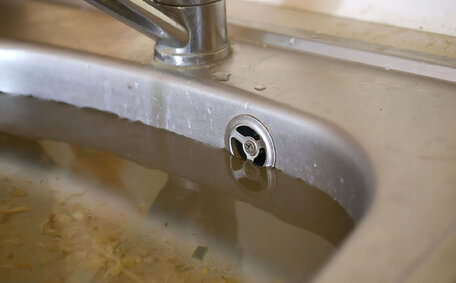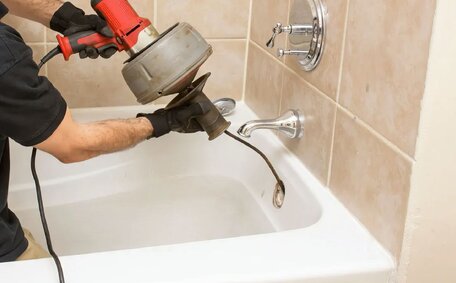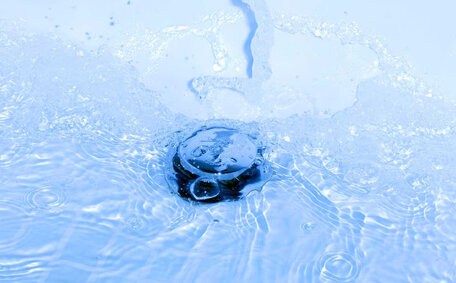Introduction to Pipe Relining as a Repair Method for Older Homes
Older homes in Hornsby often struggle with plumbing problems like corrosion, cracks, and blockages from tree roots.
Traditional pipe repair methods involved costly and disruptive demolitions, while Sydney’s pipe relining offers a non-invasive, trenchless solution for restoring pipes.
Pipe relining involves inserting a resin-soaked liner, forming a new pipe inside the existing one, sealing defects, and removing the need for trench digging or floor jackhammering.
Relining structurally reinforces sewer pipes, extending their lifespan beyond that of traditional piping.
Homeowners in Hornsby find pipe relining minimally intrusive, revitalising systems without major replacements. No-dig technology also enhances the performance of gas hot water systems during property renovations.
Evaluating if Your Older Home’s Pipes Are a Good Candidate for Relining
When assessing pipe relining projects, factors including pipe material, diameter, and extent of damage are critical. Common pipe types are being rejuvenated, creating new pipes without the need for excavation to remove old pipes in ageing houses, which include:
- Cast Iron Sewer Pipes - Prone to rust and corrosion but can be relined if structurally sound.
- Copper - Relining is not possible if severely corroded but effective for minor wear-and-tear.
- PVC & Concrete - Largely resilient materials that adapt well to relining if cracks and holes are limited.
- Clay - Relining able to reinforce clay pipes showing signs of deterioration.
Our experienced plumbers conduct detailed and meticulous inspections of the pipes in your home. We scrutinize the condition of each section of damaged pipes, including diameter, material quality and the extent of impairment. Relining is suitable for most pipes in older homes if there are no full collapses, showcasing the versatility of our plumbing services; initial repairs might be necessary.
Crucial determinants for pipe relining suitability encompass:
- Pipes must have at least 50% of original wall thickness. Thinner pipes risk future failure.
- Blockages in broken pipes will be cleared and protruding taps/roots removed for liner insertion.
- Sections with severe corrosion and large holes exceeding limits require patching prior.
Following the inspection, a reputable relining company would suggest the optimal path for your plumbing, possibly delineating the pipe relining process. With favourable pre-existing conditions, you need not worry about disruptive alternatives, as our relining services provide remarkable benefits.
Accessing and Preparing Older Home Pipes for Relining
To prepare your property’s plumbing for structural reinforcement, don’t hesitate to call us to tap into unparalleled expertise, as previously evidenced. Preferring minimal demolition, our technicians locate cleanout points to effectively access sewer lines for pipe relining.
If no viable entry spots exist, small external excavations tap into the main sewer line. For internal plumbing such as drain and storm water pipe systems, sections of drywall or flooring will only be removed to expose pipes if necessary. We’re committed to a quiet quick clean approach, ensuring our presence is barely noticeable.
With access points decided, the entire sewer pipe undergoes preparatory cleaning. High-pressure jet washing clears blocked drains and removes corrosion and roots, preparing a smooth base for the relined pipe, thus avoiding digging and enhancing water system efficiency.
After thorough drain cleaning, technicians will patch holes and joints in the existing pipe using short liner sections for structural stability. Technicians adeptly manage diameter inconsistencies before sealing any gaps, an essential step before commencing the relining procedure.
Hornsby Plumbing team was very professional and non-intrusive in accessing and preparing mature pipes for rejuvenation. Homeowners are satisfied with the thoughtful restoration of plumbing functionality that relining provides in older homes.
Understanding the Pipe Relining Process and Technology
Pipe relining replaces old pipes by inserting a resin-soaked felt liner into the existing plumbing, which hardens to form a seamless new pipe wall. There are two main methods used:
Cured In Place Pipe Lining (CIPP)
This is the most common pipe relining technology, where the resin creates a hard fibreglass shell, sealing cracks and reinforcing the interior.
This method involves soaking a felt tube in two-part epoxy and inserting it into the damaged pipe, with air pressure or hydrostatic head used to keep the liner against the pipe walls while it cures.
Close-Fit Pipe Lining
In this method, a pre-cured epoxy-coated liner is folded for insertion, then expanded inside the pipe with hot water to its original shape.
Expandable options are also available.
By sealing damage and protecting against future corrosion or cracks, the restored flow and integrity from our pipe relining services lasts for decades. With minimal digging required compared to replacement, pipe relining is an innovative and eco-friendly solution for refreshing your plumbing system.
Comparing Pipe Relining and Replacement in Older Homes
When homes exhibit the need for pipe repair, Residents pondering over their pipe solutions might find it’s a good idea to choose between invasive replacement or seamless trenchless relining. Here’s how the two options compare:
Cost and Excavation Requirements
Replacing pipes in an old house averages $380 per metre, with costs escalating if access is difficult. Addressing blocked drains traditionally required extensive demolition, disrupting everyday life. This causes major structural disruption, prompting many to go ahead with the less invasive relining option.
Conversely, our pipe relining service, at approximately $130 per metre, is substantially less expensive than traditional methods, sparing gardens and lawns from being dug up, and offering a welcome 65% cost reduction. As a solution that eliminates the any digging up your yard, it aligns beautifully with current property conservation efforts. With no new trenching or restoration works, your pipe system saves households significantly on expense and upheaval.
Time and Convenience
Sewer relining is efficient, taking 1-2 days to complete compared to the week-long process of a full home repipe. Such efficiency judiciously keeps water service disruption to a minimum, often just relining without the need for broader measures.
The no-dig approach prevents the need for extensive landscaping, optimally preserving your lawn and garden, which usually accompanies traditional sewer pipe repair. This method offers a quicker, less intrusive restoration of functional pipes.
Structural Preservation
Unlike traditional water pipe replacement methods which radically touch our floorplans and landscaping, relining avoids undermining the existing property structure. With pipes reinforced from the inside, the home maintains foundational and land stability.
As an entity known for being honest and reliable, we guarantee that relined pipes endure for 50-70 years, matching new ones without the need for hefty concrete work. It’s an enduring 21st century solution; our skilled plumbers did a great job of fortifying your home’s plumbing for the long haul.
So for ageing abodes requiring discreet pipe repair, household structural preservation, and convenience, trenchless relining comes out on top compared to full pipe replacement. Bring your elderly pipes into the modern era with this innovative no-dig technology.
Longevity and Durability of Relined Pipes
When it comes to restoring aged plumbing, homeowners want confidence their repair solution will endure long-term. Pipe relining offers exceptional durability, extending the lifetime of your existing pipes by 50-70 years on average.
The robust epoxy resin which can be applied forms a durable barrier inside the plumbing pipe network. It waterproofs all way against moisture damage while smoothing out cracks, holes and corrosion to prevent future leaks. Tree roots penetrating joins and fractures are also barricaded outside the reinforced walls.
We confidently provide pipe upkeep without trenches or re-routed plumbing, so there’s no need to worry about the substantial turmoil associated with bygone replacement methods. Integrity is seamlessly reinstated, causing inconsequential disruption inside your treasured home and garden.
Hornsby Plumbing stands behind its top-notch service, offering a 50-year warranty on pipe relining, affirming its longevity on par with new piping. Homeowners appreciate the reassurance provided by pipe relining, which endures for over half a century, while also avoiding costly jackhammering and restoration.
Recognising their reliable service and lasting results, I wouldn’t hesitate to use them again, recommending their expertise for relining and injecting contemporary resilience into ageing homes. Protect your pipes for generations to come with this trenchless technology.
The Cost Effectiveness of Pipe Relining vs Replacement
In older Hornsby homes, the cost difference between trenchless pipe relining and full replacement is significant: relining is less disruptive and more economical.
Pipe replacement necessitates jackhammering and wall demolition to reach plumbing, prompting homeowners to consider the significant impact on their budget, with costs averaging $380 per metre. This is followed by extensive structural repairs to rebuild damaged concrete slabs, flooring, and landscaping. A full repipe could potentially cost upwards of $1000 per metre for a medium-sized house.
Meanwhile, pipe relining provides long-term integrity without the huge upfront expense. At approximately $130 per metre installed, relining avoids destructive excavations and lowers labour time. With there no trenching or restoration works needed, households save 50-75% compared to replacement.
Our proficiency ensures ongoing savings as we swiftly handle relining, reducing water waste and mitigating potential leaks that could lead to emergency plumbing call-outs. The epoxy barrier shields elderly pipes for 50+ years compared to alternatives lasting just 20-25 years before failures emerge.
For learning more about sustainable, affordable pipe reinforcement without massive property disruption, relining brings substantial lifetime value. It secures an elderly home’s plumbing backbone for generations at a fraction of replacement costs.






